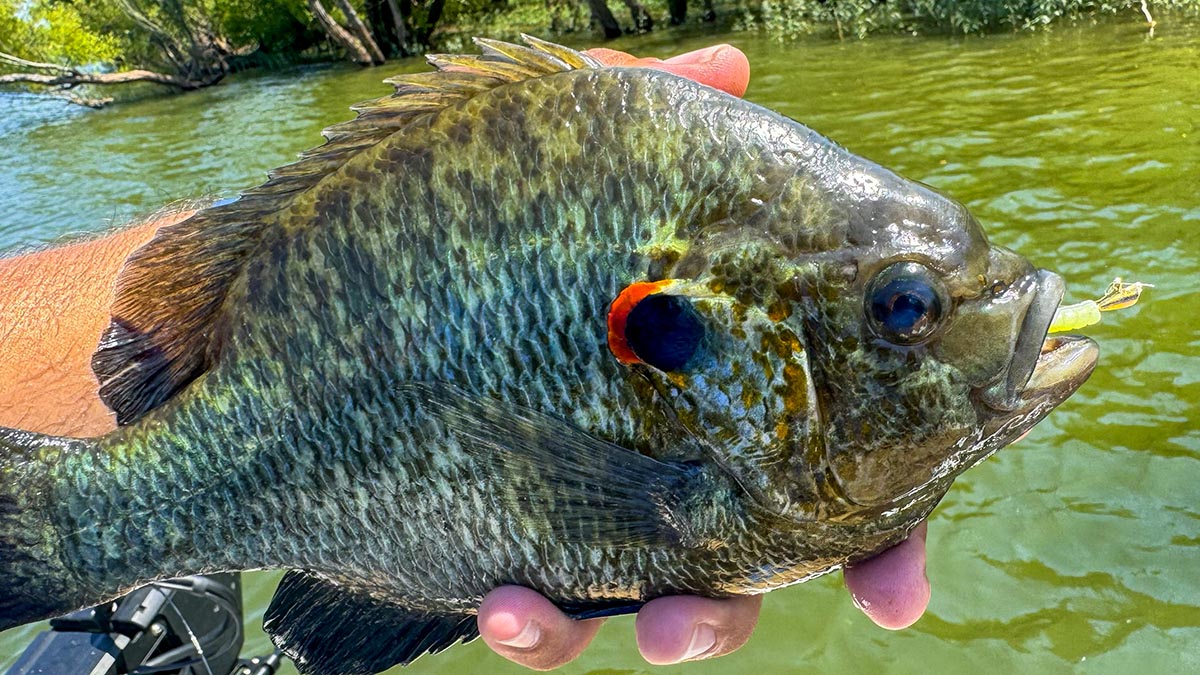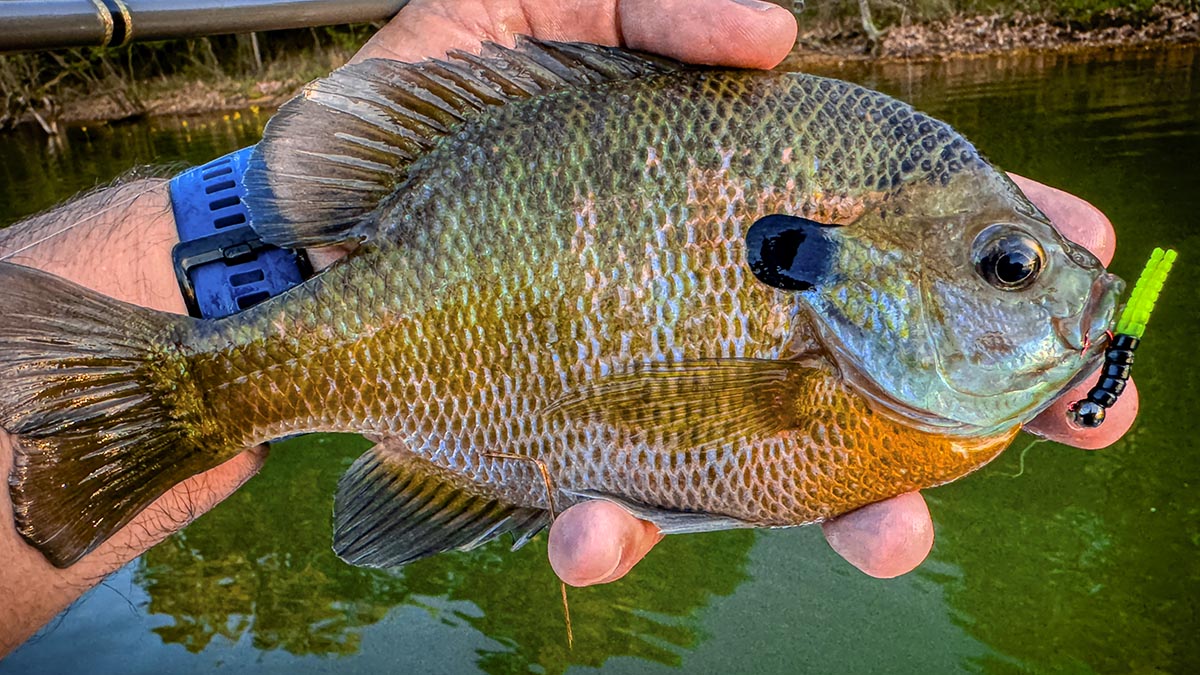Bluegill, Goggle Eye, Warmouth, Red Ear Sunfish, Longear Sunfish, Red Breasts, Coppernose, Green Sunfish, Rock Bass and other species of panfish are prolific across the United States and catching panfish is not only action packed, but can also be a great fight on light gear when you learn to target the bigger fish. And using light gear like 2 pound line, ultralight rods and small jigs with soft plastic bodies and hand-tied hair jigs and spiders can make for some dynamite fishing the often leads to some dynamite eating. This guide will help you find, hook and catch bigger panfish.
We will cover lures, gear, tactics and locations for all panfish in general and some specific nuances we've learned with presentations and lure profiles to give you a big advantage on your panfish pursuits.
BASIC UNDERSTANDING OF PANFISH
We will focus a lot of our discussion around bluegills as that is the most prolific of the panfish species and what they do is often akin to what all the other panfish in a system do as well with slight variations. So generally speaking if you can find big bluegills you can generally find big shellcrackers and other panfish nearby or doing something similar at those same times.
Seasonally speaking, Bluegill are migrators. And their migration is simply based around their food and comfort levels. In other words when the water warms up in the spring they will come out of deep water, move shall shallow, spawn, guard, feed shallow on bugs for a while and then move out and suspend in the summer, before coming back shallow in the fall to feed heavily shallow before going out really deep to ride out the winter weather.
Bluegills and most other panfish are warm water species. Crappie can be considered a cold water species as they are definitely more active with the water is between 55 degrees and 65 degrees. While Bluegill are most active when the water gets above 70 degrees. Same for Red Ear, although they are hearty panfish and can thrive in a lot more extreme environments.
Also of note is the fact the bluegills in warmer climates only live 5-7 years while bluegills in colder climates can live 15 years. It has to do with their metabolism. If they live in warm water environments 12 months out of the year, their metabolism is at maximum all year, while a bluegill in Northern Minnesota may only have a few months of elevated metabolism. So all things considered, they probably live the same amount of months of high metabolism, there are just a lot more months crammed into a smaller window in southern climes.
So we say all that to say these are creatures of habit. They move with the food. Which surprisingly changes throughout the year for them. Bluegills will eat microorganisms, aquatic macroinvertebrates, larvae, midges, nymphs, terrestrial bugs, snails, mussels, worms, eggs, shrimp, and even small baitfish. They also can convert to eating zooplankton as part of their diet. In fact there is a good deal of research and published papers that show some bluegills decide to move offshore and feed on zooplankton as a way to avoid predation. So a wide variety of food sources can make up the panfish's diet on any given body of water.
But as a fisherman, I generally believe that anything buggy in the water looks like food to a bluegill. Whether or not that bug represents the flying terrestrial kind or is the aquatic nymph or larvae version of the same bug makes no difference. So I generally gravitate towards buggy or larvae looking offerings when fishing for bluegills although at times things that move more like a minnow can be more productive.
A bluegill is more reactive than picky when it comes to biting. But that obviously is relative to their diet.
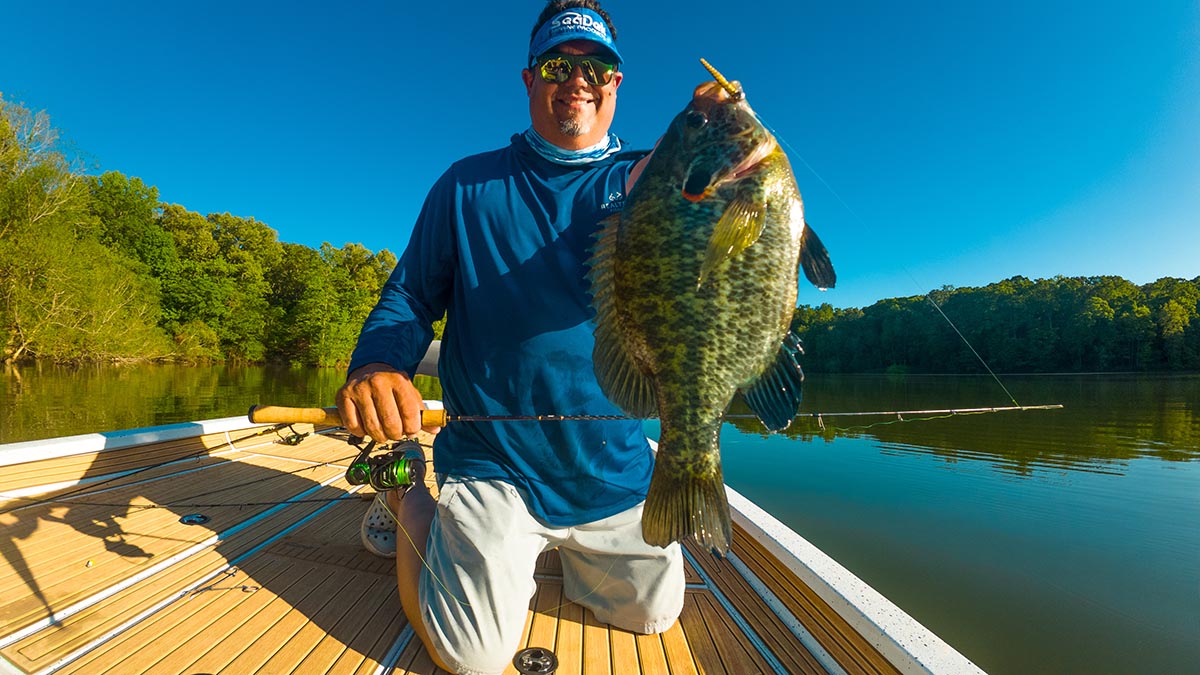
WHERE AND WHEN TO LOOK FOR PANFISH
I always start with season tendencies and work back. So if it's winter then I assume most of the bluegill are moving deeper as the water gets colder. They also will have more of a tendency to group up than be the loaners they were in the summer. So I'm generally going to start my search around deep structure like flats off the river or creek channel, humps or high spots adjacent to a creek channel and around deep forms of cover like big rocks, brush or stumps in deep water. If I don't find many fish there, I will start working back shallow to where I think they were in the fall. Somewhere in between the two I should intersect the fish.
Same goes in the spring. I know they are coming shallow as the water warms so I start looking at mid depth to shallow cover. If I find them around a laydown near a spawning flat or some deep brush piles that lead into some spawning bays great. If not I might venture shallower and look a bit and if I see nothing, then I will venture back towards their winter haunts. Again starting with seasonal tendencies and working back.
Panfish tend to group up in the biggest groups in the winter, finding the warmest water deep on deep basins off the main lake structure and channels or in big bays off the main creek channels. Then they come shallow and spread out to feed up for the spawn that will come as the water temps approach 70 degrees. They will bust up into smaller groups and feed and then move shallow wallow out colonies of beds to spawn. After the spawn they can get really broken up and roam feeding on shells on their way out to mid depth and deeper cover. As you get into summer I find a lot more wolf packs of bluegills and panfish. Often suspending around cover, in shady areas and adjacent to deep water structure.
They will suspend and roam a lot this time of year off shore. You will find a lot more activity early and late. As you get into the fall they will come shallow to feed again and often start grouping up in larger groups again before creating massive deep water schools in the winter. So you can find them up and down the lake off the main river in the winter. But in the fall I look for shallow protected pockets that have hard bottoms, shade and sun both. And late in the afternoon evening is when I find the best activity. Especially as the water cools. The afternoons will be the warmest parts of the day, the fish will be the most active as the sun goes down as panfish in general are crepuscular in nature. In other words, they prefer low light conditions to feed heavily.
I think that is largely due to the increased activity of bugs and acquatic things as the sun goes down. I watched dragon fly, may fly and other hatches go nuts just before dark in the late summer and fall months. And you see the panfish get more active as you see the bugs get more active. It's a natural fishing hot time for those reasons.
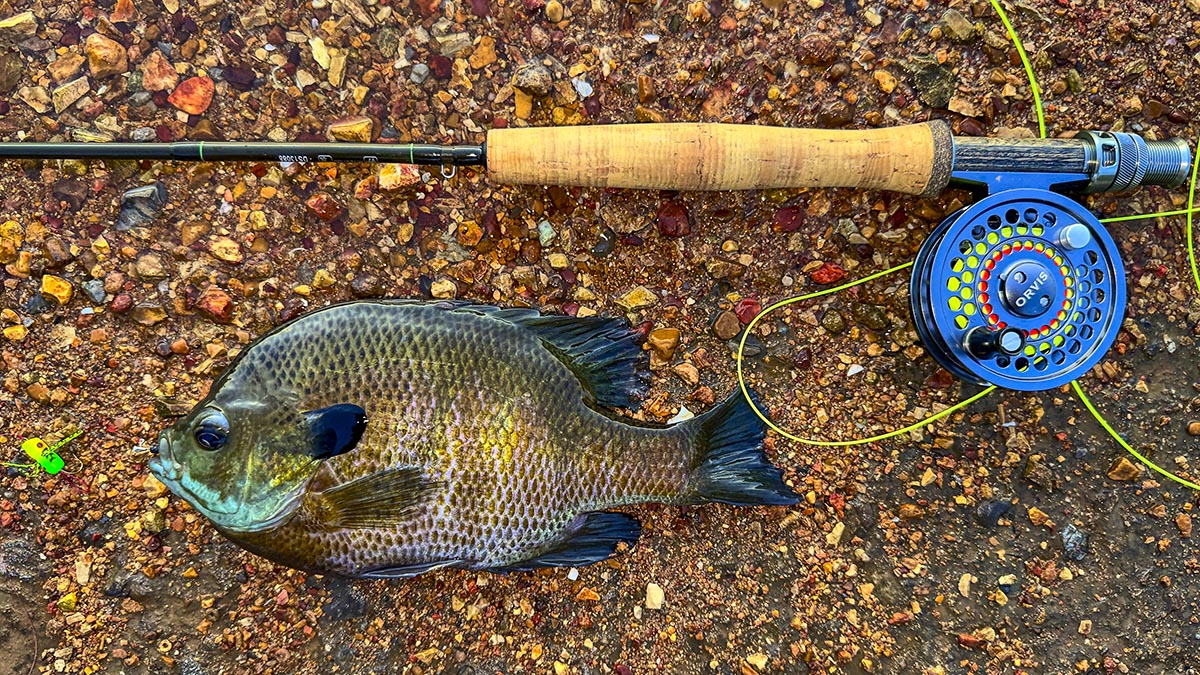
HOW TO FISH FOR PANFISH
There are a myriad of ways to get a panfish to bite. But I believe a few ways consistently produce not only the most action but the best fish. While I know live bait like red worms, crickets, wax worms and more are dynamite for catching panfish, I will focus most of my approaches with artificial offerings. Less mess, less hassle, no going to the bait shop on every trip or dealing with the mess and hassle that comes with live bait.
I have had a lot of days where I caught all the panfish I wanted on a single jig and plastic. So for me I can have a couple bluegill rods on the ready at all times and catch fish anytime and everywhere I go.
I often start just casting a lightweight jighead with a plastic like a Trout Magnet or Panfish Magnet. Or I will hop a hand-tied bug like the Bream Boss. But usually if there are active panfish in an area, a few casts with a 1/16 to 1/64-ounce Trout/Panfish Magnet will let you know if there are fish around the area.
You can vary retrieves in three main ways. Either cast, let sink and just slow steady retrieve the lure with maybe a stutter or slight twitch here and there. Or, cast and let the lure sink to the bottom. Then twitch the jig up and let it sink again all with the rod. Or reel a half a crank on the reel handle fairly quickly to make the jig shoot off the bottom and sink back. If none of those retrieves work, you can start experimenting with floats.
With a float, you can fish slower and can keep the jig suspended in a strike zone longer as well as be more erratic. You can fish the float rig with varying retrieves as well. You can use a pull and stop retrieve that will pick the bug up move it forward a foot and the let it drop and suspend again under the bobber. This is great with shallow fish on shallow bodies of water and at those shallow times in the spring and fall.
Sometimes just straight reeling very slowly, barely even making a wake on the surface with the bobber works better than any other presentation. I think fish hone in on the bobber's wake and then see a bug below it at their level and bite.
The last way is to jerk the bobber a few inches or a foot at a time to cause the bait to shoot up and the swing back under the bobber. This can get aggressive fish to react well. A Panfish Magnet under an E-Z Float can be deadly throughout the year. It's a very effective way to present a larvae looking offering to the fish.
But day in and day out, I am casting and winding and covering water. I will sometimes reel slowly with the slightest constant twitching or shaking of my rod tip to make that bait seem like it's inching along through the water column much as I predict a small nymph or larvae does.
In deep water like in the winter, I often go to two bugs on a line with a dropper rig or trailer rig. This helps get the bugs down quicker to the deeper fish and it can make feeling your lures easier. I will often go all the way up to a 1/16 ounce head and double up when fishing deep. You can also rig a drop shot and put a jig above the weight instead of a hook. That's effective as well.
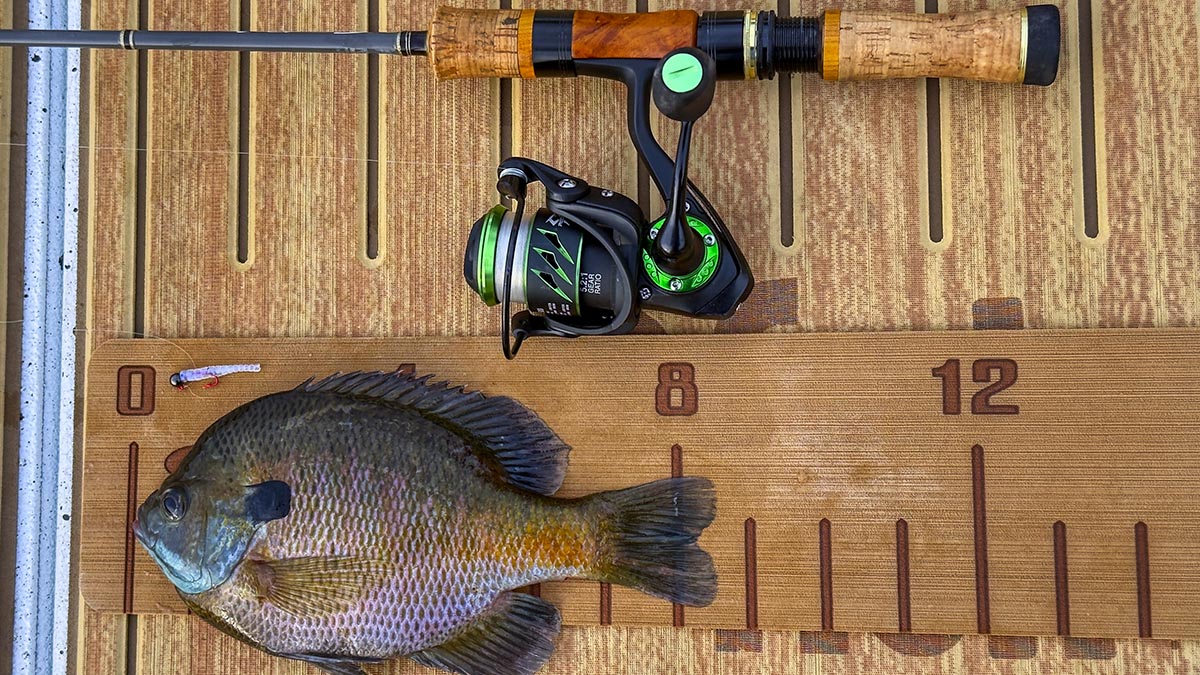
PANFISH GEAR SUGGESTIONS
You can keep panfishing very simple. A good light or ultralight spinning rod and small 500-1000 sized reel and some 2 or 4-pound line and you will be good to go. You can also use bait finesse system gear to fish for them and I will often employ a BFS setup when using hard baits like spoons or small cranks or you can fly fish for them as well and make it as fun as you want. And there is a lot of crossover between conventional and fly fishing for bluegill as we'll explain in a minute.
I also recommend floats like the E-Z Float for suspending your jigs as well as small B split shot if you need to add some weight to get your bugs down or give you a bit more distance. A small net is handy if you use light line, because if you hook into a big red ear on light line, you'll be wishing you had a net. Also some sort of scent like Slab Bites that you can use to make panfish commit can be a huge bonus.
BEST PANFISH LURES
The best lures for panfish mimic small aquatic larvae and nymphs, which lures like the Trout Magnet / Panfish Magnet do perfectly. Other times something with legs and hair can be a lot more appealing to gills and shellcrackers and something like the Bream Boss is perfect for fooling those fish. And with the ability to add scent, which is a big deal with panfish, you have the best of all worlds. Not to be outdone is the often overlooked Mini Magnet. Let's take a look at each and their applications for loading the cooler with panfish.
Trout Magnet / Panfish Magnet
This bait is one in the same. There are colors designed more for trout and colors designed more for panfish but honestly, you let the fish tell you what is best. I've had some bang up days on big red ears and slab bluegills with bison, black/green, mealworm, white, glow in the dark and the new natural color that was just released on Black Friday.
Pair these with the new 1/32 ounce tungsten jigs and you have a deadly combo for panfish just straight reeled with small twitches, under an E-Z Float or with a lift drop retrieve. These cast pretty well on 2-pound line and make the fight really fun.
This spring I had some banner days on the Trout Magnet pitching around shallow grass and twitching the bait on fish I could see swimming around the edges of the grass. The natural appeal of this profile and colors makes these jigs impossible for big bluegill to resist.
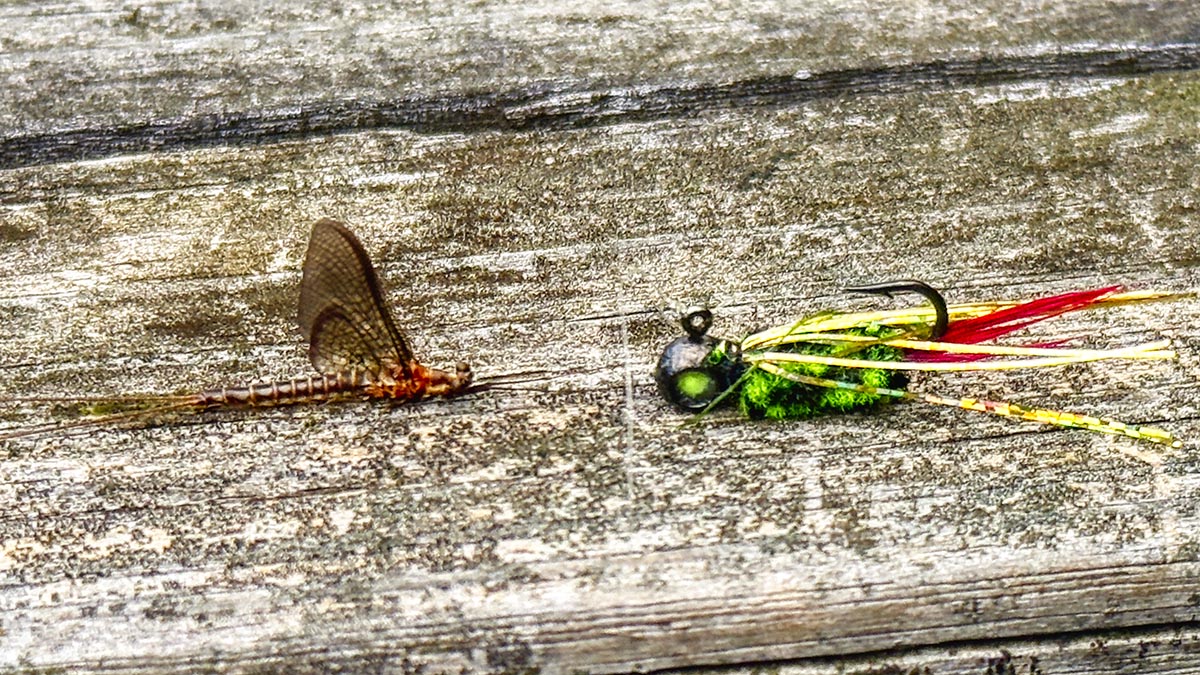
The Bream Boss
Cole and Jay have a good friend who designed the Bream Boss and they have been using this jig to slay big slab bluegills and red ears in their fishing. The tassel like mylar attractor wings and hair tail give this bug a lively look in the water. And the Eye Hole jighead design allows you to easily add scent to this bug.
Peg an E-Z Float a few feet above your jig and work it along cover, shady areas and shallow waters or double up and fish them deeper when the big bulls go deep. Having a good nymph like plastic and a hand tied spider bug is the perfect one-two punch we've found for all your bluegill fishing.
The Mini Magnet
The Mini Magnet was designed as a dropper jig to be able to present a fly-like nymph to fish under the weight of a normal Trout Magnet or under your favorite dry fly as a dropper on a fly rod. It is absolutely deadly on big bluegills. Most anglers don't realize that a big part of a bluegills diet is eating very small nymphs and larvae and the Mini Magnet perfectly resembles this.
I had a day this summer where I went to the lake after work with my fly rod and was fishing some foam hoppers and catching a few fish but missing a lot more. I tied on the Mini Magnet in green with a black 1/200 mini magnet head. It perfectly mimics caddis larvae and midges and almost every big bluegill I caught was on the Mini Magnet and not the big foam hopper. The foam hopper became my bobber.
It's equally as deadly fished under your normal Trout Magnet and Bream Boss Jigs and you should definitely experiment with this tiny bug because it is absolutely deadly on big gills and shellcrackers!
Bluegill fishing is a great way to introduce kids to fishing. Weather with spinning rods, fly rods or even bait finesse tackle, wrestling a big bluegill, shell cracker, red breast or goggle eye on light line just never gets old. And I think we are all kids at heart and never tire of seeing that float get snatched under when an aggressive gill attacks!
We have tested these lures extensively and are continuing to add colors and ideas to give you a compliment of proven tools to catch lots and lots of panfish and enjoy your time on the water a lot more.
Good luck, God Bless and Sore Lip Them All!
